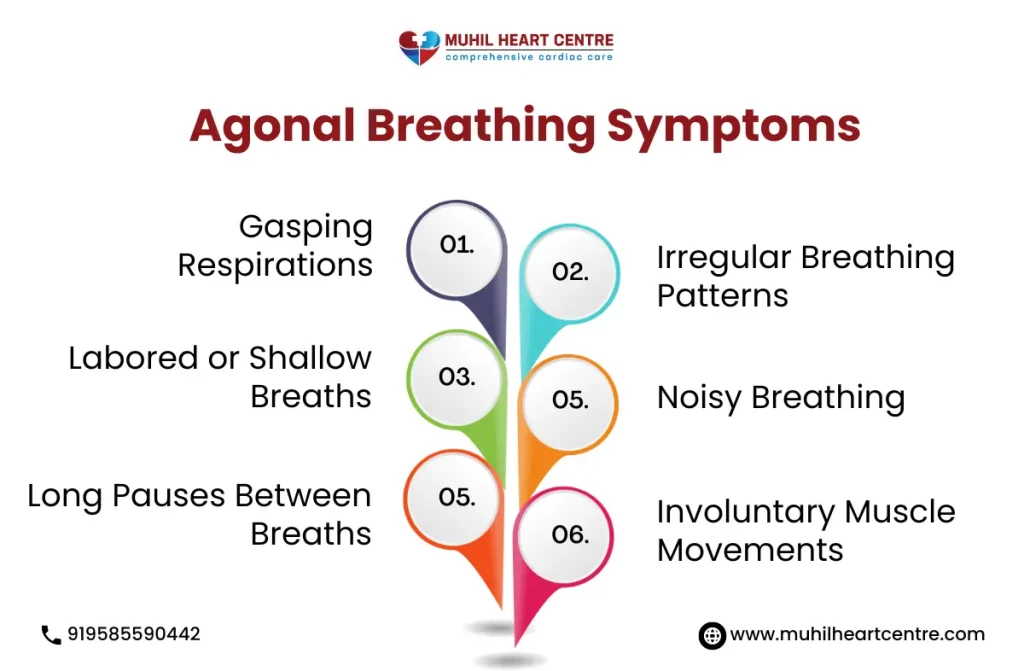When it comes to understanding the difference between death rattle and agonal breathing, these terms are often associated with end-of-life care and can be confusing. Both phenomena involve irregular breathing patterns, yet they have different underlying causes and symptoms. Knowing the difference between death rattle and agonal breathing can help families and caregivers better prepare for these critical moments.
Breathing irregularities at the end of life are not uncommon, and understanding them can help alleviate fear and anxiety. The difference between death rattle and agonal breathing lies in their causes, sounds, and how long they last. Let’s start by understanding each term in detail.
What is the Difference Between Death Rattle and Agonal Breathing?
The difference between death rattle and agonal breathing lies in their causes, sounds, and the physiological processes involved. Death rattle occurs when saliva and other fluids accumulate in the throat and lungs, causing a rattling or gurgling sound, typically due to a person’s inability to swallow as the body shuts down. Agonal breathing, on the other hand, is caused by a severe lack of oxygen in the body, often from cardiac arrest or respiratory failure. It manifests as gasping, irregular breaths that are more erratic and alarming. While both indicate approaching death, their underlying mechanisms are distinct.
What is Agonal Breathing?
Agonal breathing, often referred to as gasping, occurs when a person is struggling to get oxygen into their body. It is usually a sign that the person is in critical condition and that their organs are shutting down. Is agonal breathing painful? Agonal breathing typically occurs near death and can appear as desperate, gasping breaths. It’s not clear if the person feels pain, but the appearance can be distressing.

How Long Does Agonal Breathing Last?
So, how long does agonal breathing last? Agonal breathing can last anywhere from a few minutes to several hours, depending on the individual’s condition. In most cases, agonal breathing is a sign that death is imminent, but there is no exact time frame.
Causes of Agonal Breathing
Agonal breathing occurs due to a severe lack of oxygen, often caused by cardiac arrest, stroke, or other critical conditions. Understanding the agonal breathing symptoms can help you identify this serious condition early. These symptoms may include irregular breaths, gasping, and the appearance of someone struggling to breathe.
What is Death Rattle?
The death rattle is caused by a build-up of fluids in the throat and airway when a person loses the ability to swallow. This happens as the body begins to shut down, and it creates a rattling or gurgling sound. Unlike agonal breathing, death rattle doesn’t result from a lack of oxygen but from the inability to clear secretions.
Causes of Death Rattle
Death rattle is typically caused by the body’s inability to swallow or clear fluids, which can accumulate in the throat or lungs. Conditions such as advanced cancer, heart failure, and lung disease often lead to this buildup. Caregivers can reduce the severity by repositioning the individual or using medications to dry up the secretions.
How Long Does Death Rattle Last?
How long does death rattle last depends on the individual’s condition. It can persist for a few hours to several days as the body gradually shuts down. Unlike agonal breathing, death rattle can be managed more easily with palliative care.
Agonal Breathing vs Death Rattle
Understanding the difference between death rattle and agonal breathing is key for caregivers and family members. While both are signs that the end of life is near, agonal breathing is more dramatic, with gasping for air, while death rattle is a quieter, rattling sound caused by fluid accumulation.
Agonal Breathing Symptoms
Agonal breathing is often mistaken for normal breathing, but it has distinct characteristics that set it apart. Here are the symptoms of agonal breathing in detail:
- Gasping for air: The person may appear to be gasping or gulping for air with an open mouth, but there is little airflow.
- Irregular breathing pattern: Unlike normal breathing, agonal breaths are not rhythmic. There are long pauses between breaths, sometimes lasting several seconds.
- Labored breathing: Breathing appears physically difficult, with exaggerated chest movements or jerking motions as the body tries to get oxygen.
- Shallow breaths: The breaths tend to be shallow, with minimal lung expansion. This results in reduced oxygen intake, making it less effective.
- Sound of snorting or gurgling: Agonal breathing may produce unusual sounds like snorts, gurgles, or gasps as air moves through partially obstructed airways.
- Minimal chest rise: There is often little visible chest movement, signaling that the body is struggling to breathe properly.
- Loss of consciousness: The person experiencing agonal breathing may lose consciousness or be unresponsive, often in a critical state.
Understanding these symptoms helps distinguish agonal breathing from other breathing irregularities, making it clear that immediate medical attention is necessary.
What Does Agonal Breathing Sound Like?
So, what does agonal breathing sound like? It often sounds like gasping or gulping for air, with long pauses between breaths. It’s different from normal breathing patterns and can be distressing to hear. This is a critical moment where immediate action, such as CPR, might be necessary.
CPR Training: Being Ready for an Emergency
Being prepared to handle emergencies can save lives. Learning how to administer CPR can help when you encounter someone experiencing agonal breathing. Knowing what to do can make the difference between life and death in cases of cardiac arrest or stroke, both of which are common causes of agonal breathing. Always be prepared by enrolling in CPR training.
Conclusion
In conclusion, understanding the difference between death rattle and agonal breathing is important for those providing end-of-life care or witnessing a loved one in critical condition. While both conditions indicate that death may be near, knowing how to identify and respond to each can bring some peace to an otherwise difficult situation. For more details, or if you are unsure about how to handle such situations, don’t hesitate to contact medical professionals.

